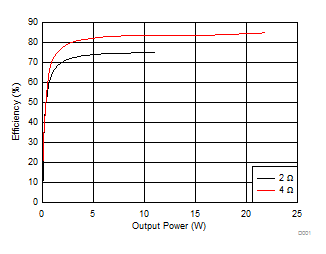SLOSEC9 September 2024 TSD5402-Q1
PRODUCTION DATA
- 1
- 1 Features
- 2 Applications
- 3 Description
- 4 Pin Configuration and Functions
- 5 Specifications
- 6 Detailed Description
- 7 Register Maps
- 8 Application and Implementation
- 9 Device and Documentation Support
- 10Revision History
- 11Mechanical, Packaging, and Orderable Information
3 Description
The TSD5402-Q1 is a class-D sensor driving amplifier, ideal for use in automotive and industrial applications, including, but not limited to: resolver-based motor control, braking systems, electric power steering, servos, and flight control surfaces. The wide operating voltage range and excellent efficiency make the device ideal for applications that require design flexibility. The integrated load-dump protection reduces external voltage clamp cost and size, and the onboard load diagnostics report the status of the load through I2C. The integrated shorted load and open load diagnostics allows systems to avoid external implementations.
 Simplified Block Diagram
Simplified Block Diagram Output
Power Efficiency
Output
Power Efficiency